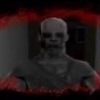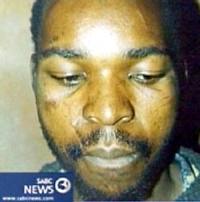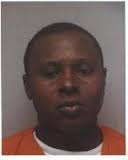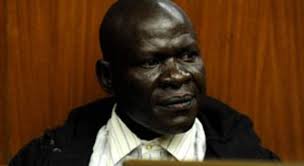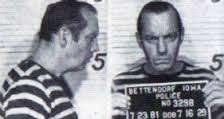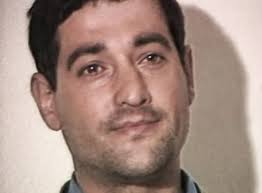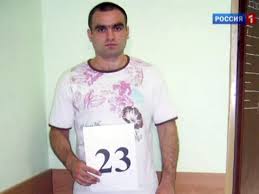South Africa's alleged "Phoenix Strangler," Sipho Agmatir Thwala, is suspected of raping and strangling 19 victims with their underwear before burying them in shallow graves. On March 31, 1999, the Durban High Court found Thwala guilty of only 16 murders and 10 rapes, and he was sentenced to 506 years in prison. Thwala, 31, of KwaMashu, became the most wanted man in KwaZulu-Natal province, located in eastern South Africa along the Indian Ocean during an alleged year-long reign of terror. At the time of his murderous spree - between 1996 and 1997 - the Phoenix and KwaMashu communities were gripped with terror, not knowing who would be next or when he would strike again. Thwala, who was acquitted of rape and murder in 1994, was arrested for the serial killings at his Besters squatter camp home in a pre-dawn swoop by police in August 1997. His arrest came days after DNA samples taken from the suspect, who was released on the rape and murder charges in 1994, matched those taken from several crime scenes.
The killer apparently lured his victims to the sugarcane fields fields of Mount Edgecombe, near Phoenix, by offering them employment. Thwala fitted the profile compiled by police forensic psychologist Micky Pistorius, who described him as "intelligent and charming to women, but extremely dangerous". Thwala speaks English, Afrikaans and Zulu and grew up as a labourer in the cane fields where he sold cane to local residents. His mother, Khathazile Ntanzi, described Twala as an intelligent man who could read and write even though he never received schooling beyond Grade 1. "He was a normal child, a gentleman and helpful around the house. He also bought us groceries when he had money. We are relieved he has been sent to jail. Who knows? He may have turned against us one day," said his sister, Zibekile.
On March 31, 1999, a Dunbar judge sentenced Twala to 506 years in prison after he was found guilty of 16 slayings and other charges. Twala, 31, showed no remorse for his crimes. He was also found guilty of one charge of attempted murder, seven of indecent assault and three of rape. Shortly before his sentencing, a rumour spread around Inanda that Thwala had been seen at his family's home. An angry mob converged on the house, setting it alight after locking his mother, Khathazile 65, and his sister Zibekile, 41, inside as they prepared to go to church. A neighbour came to their rescue, dragging them from the blazing dwelling. Fearing for their lives, the family fled to the police station with Zibekile's six-month-old son, Mthandeni, and her daughters Fikile, 2, Ntombizakhona, 7, and Phumelele, 8.
Both Thwala's mother and sister said that they believed he "got what was coming to him" when Judge Vivienne Niles-Duner imposed the 506-year sentence on him. At the time of his reign of terror, neither Thwala's mother nor his sister suspected that he was the killer. "He never changed his behaviour. He would even occasionally condemn the killings and said he hoped the killer would be caught soon," said his mother.
Elias Xitavhudzi murdered 16 women and men in Sunnyside and Magnolia Dale (Gauteng Province) in the 1960’s. As he murdered only white males and females in the strictly isolated “apartheid-era”, his murderous reign caused communal concern on both sides of the race spectrum. Waiting for his victims at various “lovers-lane” spots, he would accost the unsuspecting couple and brutally murder them. Shortly before his arrest, he acquired the nickname “Pangaman” (panga being a local word for the machete/long broad-bladed knife he used to hack his victims). Being swiftly tried and convicted of the murders in November of 1960 he was sentenced to death by hanging.
Jimmy Maketta is a South African rapist and serial killer who in 2007 plead guilty and was convicted on 16 counts of murder, 19 counts of rape.A state psychologist described him as a psychopath. Maketta described how, from April to December 2005, he would attack farm labourers from a hill on Friday evenings near the township of Philippi, Cape Town.
Jack Mogale because he lured, raped and killed women at a factory near his home, was found guilty in the Johannesburg High Court on 52 of 61 charges. Judge Frans Kgomo found Mogale guilty of nine kidnappings, 19 rapes, 16 murders, an attempted murder, three robberies with aggravating circumstances, a fraud or theft, an assault with intent to cause grievous bodily harm, a sexual assault and an escape from lawful custody. Mogale (42) had pleaded not guilty to all the charges. He continually testified that police, witnesses and his common-law wife Charlotte Manaka were conspiring against him. Kgomo dismissed this claim as “far-fetched” and “fallacious”. Dubbed the “West-End serial killer” by police before his identity was discovered, Mogale lured women to open areas where he raped and murdered them. The crimes were mainly committed at the West-End brick and clay factory near his home in Waterworks, Westonaria, and at various locations in Lenasia, south of Johannesburg.
He attacked and murdered 15 women and a child between March 2008 to March 2009. He was arrested when police were given his car registration number after a teenager went missing. The only two women to have survived his attacks testified during his trial that when they met him for the first time he claimed to be a Zionist Christian Church preacher and a prophet. One woman was given a herbal “tea” for uterine problems. She said he put herbs into her vagina and said he needed to have sexual intercourse to exorcise evil spirits from her. He however said they were having an affair and the sex was consensual. One woman said he gave her a lift, claimed to be prophesying over her, then took her to a veld where he attacked her. When she regained consciousness 24 hours later, her jaw had been dislocated and maggots were on her wounds.
Kgomo said the calm and sequential manner in which 41 state witnesses testified throughout the trial was key in building the prosecution. “The accused, however, was not a very good witness ... with his contradictions and new versions of events ... at times he wanted to shift blame onto his defence counsel,” Kgomo said. “I came to the conclusion that he was not telling the whole truth to the court. “The accused did also not bring in witnesses to back up statements made during cross-examination by the state.” The court’s judgment was assisted, to a large degree, by forensic analysis and expert advice from Professor Gerard Labuschagne, who headed the police’s investigative psychology unit. Many of Mogale’s victims were unidentified but linked to him through Labuschagne’s investigations. Nearly all the crimes had a similar modus operandi, circumstance, victimology and location. Most of Mogale’s victims were either strangled or killed with blunt force injury, and 14 were of a sexual nature, which Labuschagne, in his testimony, said was indicative of a serial killer. The professor also concluded that all the cases were “undoubtedly by the same offender”, Kgomo said.
A death wish, once in custody, is not unusual among compulsive killers. Carroll Edward Cole, admitted murderer of thirteen persons, was securely serving out a term of life in Texas, with parole a possibility in seven years, when he elected voluntarily to face a pair of murder charges in Nevada, fully conscious of the fact that he would be condemned to die upon conviction. Once the sentence had been passed, facilitated by his guilty plea, Cole staunchly fended off appeals and efforts of assorted liberal groups to interpose themselves on his behalf. His execution, in December 1985, immediately paved the way for others in the Western states, but Cole's significance lies elsewhere -- in the man himself, and in "the system's" failure to prevent his crimes. When Cole was five years old his mother forced him to accompany her on extramarital excursions in his father's absence, using torture to extract a pledge of silence, making him a bruised accomplice to her own adultery. As he grew older, Cole was forced to dress in frilly skirts and petticoats for the amusement of his mother's friends, dispensing tea and coffee at sadistic "parties" where the women gathered to make sport of "mama's little girl." Enrolled in elementary school two years behind his peers, Cole grew up fearing for his masculinity, intensely sensitive to jokes about his "sissy" given name. At nine, he drowned a playmate who made fun of him, avoiding punishment when careless officers dismissed the murder as an accident. He had begun to fight habitually at school, and once contrived to maim the winner of a yo-yo contest in which Cole had come out second-best: while playing on a piece of road equipment, he engaged the gears and crushed his rival's hand inside the dozer's massive treads. In adolescence , Cole accumulated numerous arrests for drunkenness and petty theft. He joined the Navy after dropping out of high school, but was discharged for the theft of pistols, which he used to fire at cars along the San Diego highways. Back at home in Richmond, California, during 1960, he attacked two couples with a hammer as they parked along a darkened lover's lane. Increasingly, he cherished fantasies of strangling girls and women who reminded him of his adulterous mother. Finally, alarmed by violent fantasies which would not let him rest, Cole flagged a squad car down in Richmond and confessed his urges to police. On the advice of a police lieutenant, Cole surrendered voluntarily to mental health authorities, and spent the next three years in institutions where he was regarded as an "anti-social personality" who posed no threat to others. Finally discharged in 1963, he moved to Dallas, Texas, and exacerbated matters by immediately marrying an alcoholic prostitute. The grim relationship was doomed to failure, filled with screaming battles, beatings, the occasional resort to weapons. Finally, in 1965, persuaded that his wife was servicing the tenants of a motel where they lived, Cole torched the place and was imprisoned on an arson charge. Upon release, he drifted northward, through Missouri, and was jailed again for the attempted murder of Virginia Rowden, age eleven. Cole had chosen her at random, crept inside her room while she was sleeping, and had tried to strangle her in bed; her screams had driven him away, and he was readily identified by witnesses as her assailant when police arrived. Missouri offered Cole more psychiatric treatment through assorted inmate programs, but it didn't take. In 1970, he once again surrendered to authorities -- this time in Reno, Nevada -- confessing his desire to rape and strangle women. Learned doctors wrote him off as a malingerer and set him free, on the condition that he leave the state. Cole's file contains the telling evidence of psychiatric failure: "Prognosis: Poor. Condition on release: Same as on admittance. Treatment: Express bus ticket to San Diego, California." The problem was exported, but it would not go away. Within six months of his return to San Diego, Cole would kill at least three women. (On the day before his execution in Nevada, he suggested that there might have been two others in this period, the details of their murders blurred by massive quantities of alcohol.) His victims , then and later, shared the common trait of infidelity to husbands, fiancees, or boyfriends; each approached Cole in a bar, accompanied him to lonely roads for sex, and laughed about the skill with which they "put one over" on their regular companions. Moving eastward, Cole picked off another victim in Casper, Wyoming, during August 1975. Assorted jail terms often interfered with hunting, but he surfaced in Las Vegas during 1977, staying long enough to kill a prostitute and get himself arrested on a charge of auto theft, which was dismissed. A few weeks later, after days of drinking, Cole awoke in Oklahoma City to discover the remains of yet another woman in his bathtub; bloo.‹¤ œ.¥ h‰¤ dy slices of her buttocks rested in a skillet on the stove. Returning once again to San Diego, Cole remarried -- to another "drunken tramp" -- and sought the help of local counselors to curb his drinking. Given the conditions of his home life, it was hopeless, and the urge to murder was consuming him, inevitably fueled by alcohol, a ravenous obsession. During August 1979, he strangled Bonnie Stewart on the premises of his employer, dumping her nude body in an alleyway adjacent to the store. For weeks, he had been threatening to kill his wife -- the threats reported to an officer in charge of supervising his parole -- but when he finally succeeded in September, the authorities refused to rule her death a homicide. Despite discovery of her body, swaddled in a blanket and reposing in a closet of Cole's home, despite Cole's own arrest while drunkenly attempting to prepare a grave beneath a neighbor's house, detectives viewed the death of Diane Cole as "natural," related to her own abuse of drink. Taking no chances, Cole hit the road. He claimed another victim in Las Vegas, gravitating back to Dallas where, within eleven days in 1980, he would strangle three more victims. Though discovered at the final murder scene, the victim stretched out at his feet, he was again regarded merely as a "casual suspect" by detectives. Weary of the game at last, Cole startled them with his confession to a string of unsolved homicides; at trial, in 1981, his guilty plea insured a term of life with possible parole, and he was counting down the days to freedom when reports of a potential extradition to Nevada changed his mind. The case of Carroll Edward Cole deserves a place among the classics as a showcase of "the system's" abject failure. As a child, young Eddie Cole was failed by educators who ignored his late enrollment, failed to recognize the signs of chronic child abuse, and dealt with adolescent violence as a problem to be swept away, referred to other agencies. As a potential murderer who sought the help of mental institutions, he was failed by the psychologists and psychoanalysts of half a dozen states, repeatedly discharged as a malingerer, a harmless fake, "no danger to society." On two occasions, officers in San Diego literally caught Cole in the act of an attempted murder -- and, on each occasion, they accepted his ridiculous assertion of a lover's quarrel, offering the would-be killer transportation to his home. When violent fantasies became reality, investigators with the same department stubbornly ignored persuasive evidence, rejecting even Cole's confession, passing off two homicides as drunken accidents, dismissing others as the handiwork of angry pimps. In Texas, Cole might very well have slipped the net again, if he had not elected to confess in cases where detectives were inclined to view his homicides as "accidental deaths." In such a case, the system fails not only Carroll Edward Cole. It fails us all.
Charles Ray Hatcher also known as "Crazy Charlie, A one-man crime wave, and Mr. Prince;" was born in the small town of Mount City, Missouri at 4:00 p.m. He was the youngest sibling having three older brothers; Arthur Allen Hatcher, Jesse Hatcher Jr., and Floyd Hatcher. His parents where Jesse and Lula Hatcher. Charles did have trauma in his childhood. At the young age of six years old he watched his oldest brother Arthur die of electrocution while they were flying a kite. His mother left the home and was married at least three times. At the age of 16 he moved to Saint Joseph, Missouri to live with his mother and her third husband. Then at the age of 18 he got a job but had trouble keeping a job. He first worked at the bowling alley in Saint Joseph. He then got a job in the fall of 1947 at Iowa-Missouri Walnut Co. driving a truck. By October 9th, 1947 he had stolen a company truck and returned it the next morning intoxicated. This is where his crimes started. He received a two year suspended sentence and was fired from his job.
On February 5th, 1948 Charles got a job at the St. Francis Hotel in Saint Joseph washing dishes. Just a couple of days later he received his first prison sentence. Hatcher was released from the Missouri prison system just a little over a year on June 8th, 1949 serving only 3/4 of his time. On October 10th, 1949 Charles was convicted of forgery for a ten dollar check at a gas station in Maryville, Missouri. For this crime Hatcher received three years in the Missouri State Penitentiary. It was just a couple of years later on March 18th, 1951 when Hatcher escaped from the prison but was caught but not before he had time to attempt yet another crime; burglary; for this he got two years added to his sentence. He was released from prison after serving his additional time on July 14th, 1954 and almost made it a year before committing his next crime.
On February 5th, 1955 at the age of 25 he stole a 1951 Ford in the small town of Orrick, Missouri. He was sentenced to four years for auto theft and served his time in the Ray County Jail in the small town of Richmond, Missouri. He still had not changed his pattern. He again attempted to escape and received another additional sentence of two years. He was released from prison on March 18th, 1959 from his fifth and sixth sentence of his criminal career. On June 26th, 1959 Hatcher moved his criminal activity from steeling cars to making his first known attempt to abduct a 16 year old paper boy of Saint Joseph, Missouri named Steven Pellham. Hatcher was sentenced to five years for the attempted abduction and car theft on November 20th, 1959. Staying true to his nature the very next day Hatcher attempted to escape the Buchanan County Jail with no success. Unsure if he received any additional time for the escape attempt. Charles Hatcher arrived at the Missouri State Penitentiary on November 25th, 1959. It was at this time he started taking pride in his criminal career claiming to be the most notorious criminal in northwest Missouri since the great Jesse James.
On July 2nd, 1961 inmate Jerry Tharrington was found raped and stabbed to death on the kitchen loading dock of the Missouri State Penitentiary. It is believed that Hatcher killing started here. The only punishment that Charles Hatcher received this murder was solitary confinement due to a lack of evidence to take further action. On January 18th, 1962 Hatcher was still in solitary confinement for the murder of his fellow inmate. At this time he wrote a letter to the Major of the penitentiary making the claim that he realized he needed psychological treatment. This is where the system made a huge mistake in thinking it was just a scheme to get out of solitary and possible out of prison early and refused to get Hatcher any kind of treatment. The question that many ask is if he have gone to treatment at this point in his life would things have turned out differently? With no treatment he was released to the general population October of 1962, and with the release from prison on August 24th, 1963 still receiving no psychological treatment.
August 1969 was a busy month for Charles Ray Hatcher. He confessed to the abduction of a boy in Antioch, California on the 27th of August. Hatcher asked the boy to take a ride with him. Hatcher drove to a creek and strangled the boy to death with his hands. Then just two days later on the 29th of August a six year old Hispanic boy was reported missing in San Francisco, California. A little girl the boy had been playing with reported that he walked away with a man that offered him ice cream. A man walking his dog came across them in the middle of a sexual assault and beating. The young boy did survive the horrifying encounter. When police arrested the man committing the crime he would not answer any question just claimed his name was Albert Ralph Price. However he was caring an identification with the name Hobert Prater. It was not til later that the FBI finally identified him as Charles Ray Hatcher.
On September 12th, 1969 Hatcher was brought before a judge in California for this assault, attempted murder, and kidnapping. At this time he was still claiming his name was Albert Price causing the judge to order a psychiatric evaluation. Hatcher was in the California State Hospital for a 90-day evaluation. During the first part of his stay Hatcher was completely unresponsive. Later claiming to hear voices, having delusions of persecution, being confused, and suicide attempts, was the first time Hatcher claimed a mental illness and avoided prison time. On September 30th, 1969 Hatcher began the first of five tours in the California State Hospital.
On December of 1971, Hatcher was 41 years old and the California State Hospital repeatedly sent him back to court declaring him competent to stand trial but every time was sent back to the hospital. Charles Hatcher was identified as a passive-aggressive personality with sexual deviation and murder. On January 21st of 1971, the first psychiatrist declared Hatcher insane and incompetent to stand trial. Then the very next day on the 22nd the second psychiatrist who referred to Hatcher as Mr. Prince, concluded that Hatcher was insane and incompetent to stand trial. This is when he was sent back to the hospital. On May 24th 1971 Charles was finally sent to trial and pleaded guilty by reason of insanity. Hacher was ordered another evaluation this time by a different hospital and was again found incompetent to stand trial. The actual evaluation took place on May 27th, 1971 with Dr. Carl Drake Jr. At this time Charles Hatcher still claiming to be Albert Price lied about his life history to the doctor.
The next month Charles Hatcher keeping true to his natural pattern escaped for that California State Hospital on June 2nd, 1971. He was picked up in Colusa, California 90 miles from the hospital a week later. He was arrested for auto theft giving the police the name of Richard Lee Grady. When taken to the hospital on July 15th, 1971 for evaluation the hospital staff know who he was. It was not until April 4th, 1972 that the hospital staff and doctors decided that Charles Ray Hatcher's treatment was not going any where and he was a danger to the other patients. These is when he was finally sent to the prison state hospital at Vacaville, California. It was just a few months later that he was transferred to the San Quentin Prison in August of 1972. This is where Hatcher was finally forced to stand trial for his crimes. It had been three years since he had committed these crimes when this happened. October 24th, 1972 Hatcher was ordered to have two more evaluations. The first one was to determine if he was competent to stand trail and the second was to determine if he was sane at the time he committed the crimes. On December 12th, 1972 Charles Hatcher was tried for the abduction of Gilbert Martinez; the six year old Hispanic boy; he was convicted of the charges. Hatcher was sentences to the California State Hospital. He entered the hospital on January 9th, 1973 as a mentally disordered sexual offender.
Hatcher could not help himself her on March 28th, 1973 he tried yet another escape attempt. This time unsuccessful. A security guard found him hiding in a cooler in the main courtyard. Hatcher had two sheets stuffed into his paints for some reason. He later confessed that this wad an escape attempt. This made the doctors feel that it was time for Hatcher to go back to court because he was a threat to society. In May of 1973 Hatcher received yet another evaluation by psychologist W.D Lewis who declared that Hatcher was "manipulative institutionalized sociopath." Then on June 15th, 1973 Hatcher was recommended for a transfer to a maximum security prison. Due to this recommendation Charles cut his wrists because he did not want to go. After this out burst he was concluded to be paranoia and schizophrenia and this saved him from the maximum security prison. On May 20th, 1977 Hatcher was released to the Home Care Services Center; which is a halfway house in San Francisco, California. This early release happened due to a bill being pasted giving inmates credit for time served in mental health facilities as well as time in jail. He also had received very good reviews at the parole board hearings. Less than a month later Hatcher was on the run declared a parolee at large.
At the age of 47, on May 25h 1977 Hatcher was supposed to report back to the half-way house every night at 9:00pm and take a total of nine prescribed pills. Five days later, Hatcher violated the terms of his parole and was on the run. He was considered a walk-away.” Then on June 13th 1977, Hatcher was declared a “parolee at large” and besides a sighting in Wilmar, Minnesota, was not seen for about a year.
This is when Hatcher began killing again. On May 27th, 1978 Charles Ray Hatcher had returned to Saint Joseph, Missouri where he had began his criminal career. He kidnapped four year old Eric Christgen. Eric was abducted from a park in downtown Saint Joseph, Missouri. Eric's babysitter had left him at the park to run into the store to buy a flag. When she returned Eric was gone. Melvin Reynolds was falsely accused of Eric's assault and sentences to life in prison on February 14th, 1979. Later Buchanan County Police would find out that due to a rush to close this case the had convicted the wrong man it should have been Charles Ray Hatcher. Then a few months later 150 miles north of Saint Joseph, Missouri on September 4th, 1978 Hatcher was arrested in Omaha, Nebraska. He had sexually attacked a 16 year old boy. Victims name is unknown. Hatcher was released from the Douglas County Mental Hospital in Omaha, Nebraska on January 31st, 1979. This is where he had served his time for the 1978 sexual attack that happened in September. When arrested Charles gave police yet another fake name this time claiming to be Richard Clark. Do to the staff never taking fingerprints the police and staff may never have known who Hatcher really was. On May 3rd, 1979 Hatcher was arrested yet again in Omaha for the assault and attempt to kill seven year old Thomas Morton. Some how the charges where dropped and Charles was sent to another mental hospital for this crime. Hatcher was released from the hospital on May 21st, 1980 but returned just two months later because of another assault charge.
At the age of 51 Charles Ray Hatcher still had not changed he again escaped this time from Norfolk Regional Center. Hatcher was arrested in Lincoln, Nebraska under the name Richard Clark on October 9th, 1980. Hatcher has attempted to assault and murder on a 17 year old boy. He was discharged from a mental facility just 21 days later. Charles Hatcher had moved his crime wave to Des Moines, Iowa. On January 13th, 1981 he was arrested again under the the name of Richard Clark. This time he had been a knife fight. He spent a short time in another mental facility. On April 10th, 1981 he was discharged from the Iowa Mental Hospital to the care of the Salvation Army shelter in Davenport, Iowa. On June 20th, 1981 a man by the name of James Churchill was stabbed to death on the Missouri River banks near Rock Island, Illinois. It was not until later that Charles confused that he and Churchill had been drinking together and Hatchers impulse to kill was growing in him. Charles has stabbed Churchill 10 to 12 times with a knife that had been embedded in a bone in Churchill's right chest near the heart. Arrested in Bettendorf, Iowa forattempting to abduct an 11 year old boy named Todd Peers from a grocery store.The boy was able to run Ironically this was Hatcher’s 52nd birthday.
Arrested on his 52nd birthday(July 16th, 1981) for attempting to abduct an 11 year old boy named Todd Peers. Hatcher using the name Richard Clark when the police picked him up. On March 18th, 1982 again for some reason the charges where dropped against Hatcher and he spent only 49 days in a mental hospital in Mount Pleasant, Iowa before being released on May 7th, 1982. On July 27th 1982 Charles Hatcher had made his way back to Saint Joseph, Missouri. A woman by the name of Stephanie Richie was approached by a strange man wanting to take her for coffee. Something about the man frightened her so she requested that he leave her alone. This strange encounter took place only a half a block from where Eric Christgen had been abducted only four years earlier. The next day Hatcher abducted a ten year old boy; Kerry Heiss, outside the Saint Joseph Mall. Hatcher claiming to be a security guard grabbed the boy and began to pull him away from the record store. Kerry was able to get away and told his grandmother but Hatcher was gone by the time that the police got to the scene. On July 29th, 1982 Hatcher abducted and murdered an 11 year old girl; Michelle Steele. Michelle had gone to a dentist appointment at 10:30 a.m she left the dentist office at 11:30 a.m. It was not until her mother Annette Steele got home at 3:15p.m that Michelle was noticed missing and the police where called. It was not until July 30th, 1982 that Michelle was found by her uncle dead between two logs. Michelle Steele's body was found less than a mile downstream from where Eric Christgen's body had been found. This was the same day that Charles Hatcher checked himself into the St. Joseph State Hospital under the name of Richard Clark.
On August 3rd, 1982 Charles Hatcher was charged under the name Richard Clark for the murder of Michelle Steele. The charge this time was first degree murder. His bond was set at $250,000.00. With the identification by an eye witnesses that Hatcher was the man down by the river, the teeth marks matched the bite marks on the girls body, shoe imprints matching, his knapsack, nylon cords, as well as the photo identifications from the two attempted abductions the police had sufficient evidence to charge Charles Ray Hatcher. On August 13th, 1982 Hatcher received his first mental evaluation in this case and it was concluded that he could understand the charges but need to be sent to another mental facility. It was not until April 19th, 1983 that Hatcher was declared competent to stand trial for first degree murder in the death of Michelle Steele. On May 3rd, 1983 Hatcher was sent to the Buchanan County Jail to await trial. This is when he gave the deputy a peace of paper that said, "Please call the FBI and tell them I would like to see them today. Very important case." FBI agent Joe Holtstag met with Hatcher. This is when Hatcher gave them a map to Churchill's body but still did not admit to killing him. Charles also told Joe Holtstag that there where 16 bodies, 13 adults, and all where male. This is how they got the information to know that they had convicted the wrong man of Eric Christgen's murder. Charles made it clear to Holtstag that he would trade information about the murders for taking the death penalty off the table. On June 20th, 1983 attorneys Dahms and Morrey had obtained a charge for Hatcher and trial date was set for August 22nd, 1983. Just five days later Holtstag received the letter that Hatcher wrote with a detailed account of the murder of four year old Eric Christgen's. This letter contained details that no body else could have know. Taking his time confessing to all his murders he confused to the Churchill murder on August 3rd, 1983. He also confessed to the William Freeman murder in 1969. By the end of the interview on August 3rd he had filled in all the details about his criminal career from auto theft on October 27th, 1947 all the way through and up to the murder of Michelle Steele on July 29th, 1982.
On September 12th, 1983 Hatcher plead not guilty and another trial was set for January 9th, 1984. The on October 13th, 1983 Hatcher was sentenced to life in prison in the MIssouri State Penitentiary for the murder of Eric Christgen. This was also the day that the man wrongfully convicted was released for the crime he did not commit. On January 9th, 1984 the trial was set to start but Hatcher had abused is attorney Dahms so much that he dropped the case. Due to this the trial was moved to Warrensburg, Kansas. The trial started on September 17th, 1984. The jury was picked in one day their were 9 men and 4 women picked to judge this case. The trial lasted five days from 9:00 a.m to 9:00 p.m. On the 22nd of September Hatcher was convicted of capital murder of Michelle Steele. He received 50 years without possibility of parole. In November of 1984 Holtstag met with Hatcher for the last time. Then on December 3rd, 1984 Hatchers motion was denied. Just a few days later on December 7th, 1984 Charles Ray Hatcher was found during morning rounds hanging in his cell. He was hanging from a piece of electrical wire that had been to brace the heavy metal ventilation grate in his cell. Hatchers hang had been tied behind his back with shoelaces. The officer did try to revive Hatcher but he was already dead.
Known as El Mataviejas" (The Old Lady Killer), Jose Antonio Rodriguez Vega is Spain's most prolific killer. As the name suggests, this heartless brute preyed on elderly women, raping and strangling 16 victims over a period of just nine months. Vega’s usual M.O. was to befriend his victims by offering to help carry groceries or do work at their homes. Once inside, he’d turn on the helpless woman, fondle and rape her and then strangle her to death. Sometimes he’d commit postmortem rape with a broomstick handle or other object. Then, before leaving the scene, he’d tuck the victim up in bed. Because of this many of the early victims were thought to have died of natural causes. It was the murder of 82-year-old Margarita Gonzalez that first alerted the police to the presence of a serial killer. However, Vega would commit two more murders before an anonymous tip off brought the police to his apartment. There, they found an elaborate shrine, containing trophies taken from his many victims. When pictures of the shrine were shown on TV, relatives of several victims came forward to identify their possessions. It was only then that the scale of Vega’s killing spree became apparent. Tried in 1991, Vega was sentenced to 440 years, although that meant in effect that he’d only serve 20. However, fate had other plans for the notorious granny killer. On October 25, 2002, he was stabbed to death by two fellow prisoners in the courtyard of the Topas prison in Salamanca province.
A middle-aged father of 5, Robert L. Yates Jr., a decorated military helicopter pilot, and National Guardsman was convicted of 15 murders but suspected of as many as 18. The most prolific serial killer ever sentenced in Washington state, he now sits on death row. He came from a solid, lovinghome with encouraging Support , a moral upbringing and Christian teaching from the time he could walk. He was an obedient child, a dedicated student, and a team player on the Oak Harbor High Schoolfootball team. Yates was a car buff frequently seen washing the Corvette and his other vehicles. He liked to cruise through the red-light district in a white Corvette, where the Army veteran murdered women 8 of at least 13 of his victims.
Washington state prosecutors suspect Yates is responsible for the slayings of as many as 18 women, many with a history of drugabuse and prostitution. Victims were shot in the head. The first body was found Feb. 22, 1990, and the killings continued for a decade. "Bobby is a loving, caring and sensitive son, a fun-lovingand giving brother, an understanding, generous and dedicated father, who enjoys playing ball, fishing and camping with his kids," the three-paragraph statement said. "We feel deeply for the families who have experienced loss," the statement said. "We ask that all judgments be reserved until the timely due process of law has been completed."
Signed "the Robert L. Yates family members."
In 2000, Yates, 50, pleaded guilty to the attempted murder of one woman and the killing 10 other women in Spokane County from 1996 to 1998. He's also admitted to two slayings in Walla Walla in 1975 and the killing of a woman whose body was found in 1988, in Skagit County. A judge sentenced him to 408 years in prison. Pierce County prosecutors then brought Yates to Tacoma to be tried on the aggravated murders of Connie LaFontaine Ellis and Melinda Mercer. During the 5 1/2-week trial, prosecutors told jurors this was Yates "his evil hobby." He killed for thrill of it and because he enjoyed sex with his dead victims. The death penalty was sought in this trial. Robert Lee Yates Sr. talked about his and his wife's joy at their son's birth, and his pride as Yates became a boy who never "sassed" him and always obeyed. Yates played baseball andfootball, and fished and hiked with his father.
Attorneys showed photos of Yates as a baby, in a tiny suit, with his little sister, and through the years in a military uniform and later with his children. The elder Yates acknowledged that his son didn't confide in him and that he married his second wife before divorcing his first. Recently, Yates Sr. said, his son has returned to his Seventh-day Adventist faith. "He fell away from God," the father said. "He went to the depths. But he's come back, and I really feel it's sincere." Crying, he continued, "I love him so much, and I've told him a good many times. I abhor what he's done, but I love him just the same." Yates cried during his father's testimony and when his victims' parents described their pain. Melinda Mercer's mother, Karyl Bushell, recalled her oldest daughter as a child who loved anything extravagant and funny. "She loved to dance," Bushell said, in tears. "She loved children. She loved people." She avidly hiked, skied and skated.
A troubled youth, Mercer spent her teen years in foster care but was at her mother's house for her birthday and holidays. She earned a GED, learned to hang drywall and had worked as a waitress in Seattle. In 1997, when she became aware of her daughters heroin addiction, Bushell found a hospital where she could receive drugtreatment, but she didn't showed up. Two months before her murder, she asked if she could move back home with her family in Centralia. Bushell declined out of fear herdrug use would affect the other children in the home. "She wanted to come home, and I told her she couldn't," Bushell said, crying hard. "I told her she had to start helping herself before I could help her anymore. She said, 'Mom, you're supposed to loveme,'" said Bushell. "I said, 'I do love you, but you have to help yourself.'" Emil LaFontaine of North Dakota called his daughter, Connie LaFontaine Ellis, a strong, independent girl who inspired his pride. She had 5 siblings and step-siblings, moved from the Chippewa reservation where her father lived to Spokane to be with her mother.
At 17, she had her first child, Angel, later, she gave birth to 2 sons. The first son died in infancy. She married and moved to Tacoma. In 1996, her youngest son, Randy, couldn't get a transplant in time and died of heart problems. "That was one of the main factors in the way she continued her life," LaFontaine said. "Connie was devastated by his death." She tried numerous times to beat a heroin addiction. She was working on the streets when Yates killed her, in September 1998. Her death hurt her daughter the hardest, LaFontaine said. LaFontaine cried reading from a statement he wrote about his daughter.
"Connie gave me strength and opened my life," he read. "I could not have asked for more. No wonder an eagle came down above her as she was buried, and came to hover over my own." Prior to reading the death sentence, Yates' attorneys moved for a retrial, saying prosecutors erred in the penalty phase closing arguments by making "passionate and prejudicial" statements to the jury. Defense attorneys also felt jurors committed misconduct by considering more evidence than allowed in sentencing, such as contemplating if Yates had undiscovered victims, as they reported to the media afterwards. Pierce County Judge John McCarthy rejected the arguments. The jury sentenced Yates to death after it convicted him of the aggravated murders of Connie LaFontaine Ellis and Melinda Mercer. Both bodies were found near Fort Lewis, where Yates served as a helicopter pilot in the Washington National Guard. "I'd like to thank the court for the courtesy accorded me and the professionalism shown me," Yates said quietly while looking down.
The Monster of Florence was a killer who became notorious for his pattern; he always targeted amorous couples that were out alone, shot them at close range with a .22-caliber Beretta and mutilated the sexual organs of the female victim. The killer was responsible for 16 murders between 1968 and 1985. Four men have been arrested, but police suggest that the real killer has never been identified.
Notorious Figure, serial killer. "Il Mostro di Firenze", or "The Monster of Florence", first came to prominence in 1981 in Florence, Italy. The killer became notorious for his homicidal pattern; he always targeted amorous couples that were out alone, shot them at close range with a .22-caliber Beretta, and then mutilated the sexual organs of the female victim with a sharp knife.
Il Mostro earned notoriety on June 6, 1981, after the bodies of 30-year-old Giovanni Foggi and his fiancée, 21-year-old Carmela Di Nuccio, were found near their vehicle in the Scandicci area of Tuscany, Italy. The killer had shot Foggi and Di Nuccio with a .22-caliber Beretta while the couple was parked in their car near a local "lover's lane." He then stabbed them repeatedly. After they were both dead, the murderer pulled Di Nuccio's lifeless body approximately 30 feet from the car and carefully removed her reproductive organs with a serrated knife commonly used by S.C.U.B.A. divers. The near-surgical precision with which the genitals were cut from the victim's body suggested that the killer had a medical background.
Investigators initially suspected ambulance driver—and secret voyeur—Enzo Spalleti, whose car had been parked near the scene of the crime. As law enforcement officers probed Spaletti further, he gave vague, conflicting alibis. More evidence revealed that the suspect had told his wife about the incident before it had been announced in the paper. With this evidence, Spalleti was charged with two counts of homicide and sent to prison to stand trial. Several months later, however, a new murder led police to believe they had apprehended the wrong man.
Investigators, still unable to find any new leads, began pursuing other possibilities. They investigated more than 100,000 people in hopes of gathering new evidence. Their questioning led to the doorstep of farmer Pietro Pacciani, a former rapist and murderer who had been arrested in 1951 for killing the man he'd found sleeping with his fiancée. Pacciani had been released after serving 13 years for his crime, but investigators believed that the man was still committing murders. In a highly publicized 1994 trial, a judge and jury convicted Pacciani for 14 of the 16 counts of murder. But in 1996 an appeals court overturned the conviction, citing lack of evidence.
The police, now desperate to find the murder or murderers, began developing a new theory. Acting on the belief that the killings were committed by a Satanic cult led by Pacciani, police concluded that two of Pacciani's friends Mario Vanni and Giancarlo Lotti were accomplices in the crimes. They were believed to have committed the murders in order to gain power from their victim's reproductive organs during bizarre cult rituals. Pacciani was was held in prison for a retrial, and in 1997 Lotti and Vanni were convicted to life in prison for the murders, with very little evidence to back the claims. Pacciani died of cardiac arrest in February 1998, before he was able to face his retrial. Lotti died in prison four years later.
Investigators made another leap in January of 2004, when they accused pharmacist Francesco Calamandrei of leading the Satanic cult they believed was responsible for the murders. For the next three years, police built a case against Calamandrei, as well Mario Spezi, a journalist who had been following the murders and was an outspoken critic of the police investigation. An outraged public, who believed the police had gone too far, protested the arrest. They alleged that prosecutors wanted to silence Spezi's criticisms, and pressured police into letting Spezi go. Spezi was eventually absolved of the crimes, and the group in charge of the Il Mostro investigation was dissolved in 2006. Prosecutors Giuliano Mignini and Michele Giuttari were also charged with abuse of office for their arrest of Spezi. In 2007, Calamandrei stood trial, but was acquitted of all charges due to lack of evidence. Two years later, Vanni died in a nursing home. Whether or not he participated in the crimes, or was falsely accused, remains a mystery. The identity of the Monster of Florence remains a mystery.
Vladimir Mirgorod was born in 1979 in Moscow, Russia. In 2005-2010 he was in prison for a robbery & rape. Mirgorod was rearrested after investigators checked his fingerprints and discovered they were identical to those that were left at the crime scenes of 4 murders. From 2002 to 2004, Mirgorod strangled 15 women and one teenage boy to death. Several of the victims had been raped. He had been imprisoned from January 2005 to July 2010 for the rape and robbery of a woman. He was later rearrested after his fingerprints matched those that were found at the crimes scenes. He was sentenced to life imprisonment on January 30, 2012.
